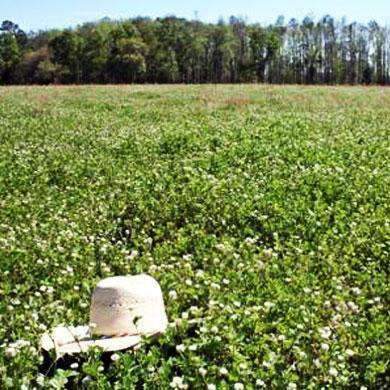Ball Clover is one of the best options for those looking for an excellent reseeding clover. It is a prolific seed producer even under high stocking rates, and a high percentage of the seed are hard seed.
Product Information
- Application or Use: Cattle Forage, Livestock Grazing, Food Plot, Cover Crop, Erosion Control
- Germination Time: 5 - 7 days, under optimal conditions
- Growing Locations: Warm Season, Transition Zone, Cool Season
- Height: 1 - 2 feet
- Sunlight Requirements: 4+ hours
- Advantages: Prolific seed producer even under high stocking rates, and a high percentage of the seed are hard seed.
- When to Plant: Recommended planting time is fall and spring when night time temperatures are consistently below 65 degrees.
Product Details
- Excellent reseeding clover
- Primary growth in mid-spring
- Well adapted to dry sites
- Great for wildlife food plots
-
Commonly used for Honey Bees
Product Information
Growth Habit: Short, 1-2 feet tall, erect growth, low growing, looks like white clover.
Origin: Mediterranean Region
Production Season: March to June. Late maturing, late production, similar to Arrowleaf clover.
Nutritive Value: Varies depending on maturity (leaf:stem ratio). Usually medium to high crude protein; medium to high digestibility.
*Product packaging may appear different than what is pictured.

Plant in the Fall at a rate of 3-4 lbs per acre. This seed needs to be at a rate of 1/4 and prefers a pH of 6.5.
Ball Clover Seed
Ball Clover Seed is Out of Stock for the season. Check out all of the Clover Seed varieties we offer here. Call our office with any questions (800-552-1027). Ball Clover is one of the best options for those looking for an excellent reseeding clover. It is a prolific seed producer even under high stocking rates, and a high percentage of the seed are hard seed.

Instructions
For more info on planting instructions and tips for the best results – check out our Warranty & Planting Information here!
Plant in the Fall at a rate of 3-4 lbs per acre. This seed needs to be at a rate of 1/4 and prefers a pH of 6.5.
Ball Clover Seed
7Ball Clover Seed is Out of Stock for the season. Check out all of the Clover Seed varieties we offer here. Call our office with any questions (800-552-1027). Ball Clover is one of the best options for those looking for an excellent reseeding clover. It is a prolific seed producer even under high stocking rates, and a high percentage of the seed are hard seed.






















